When was the influenza vaccine created. The History and Evolution of the Influenza Vaccine: A Comprehensive Timeline
When was the influenza vaccine created? Explore the historical timeline of influenza outbreaks and the development of flu vaccines. From the 1918 pandemic to modern advancements, this article covers the key milestones in the fight against the flu.
The 1918 Influenza Pandemic: A Catalyst for Vaccine Development
The 1918 influenza pandemic, also known as the Spanish Flu, was a devastating global outbreak that claimed the lives of an estimated 20-50 million people worldwide. This pandemic, caused by a new H1N1 strain of the influenza virus, was a catalyst for the development of influenza vaccines.
Early Vaccine Efforts and Military Vaccination Programs
In the 1930s and 1940s, researchers began studying flu viruses and developing the first influenza vaccines. Initially, these vaccines were primarily available to military personnel. It wasn’t until 1945 that the first flu vaccines were approved for use by the general public in the United States.
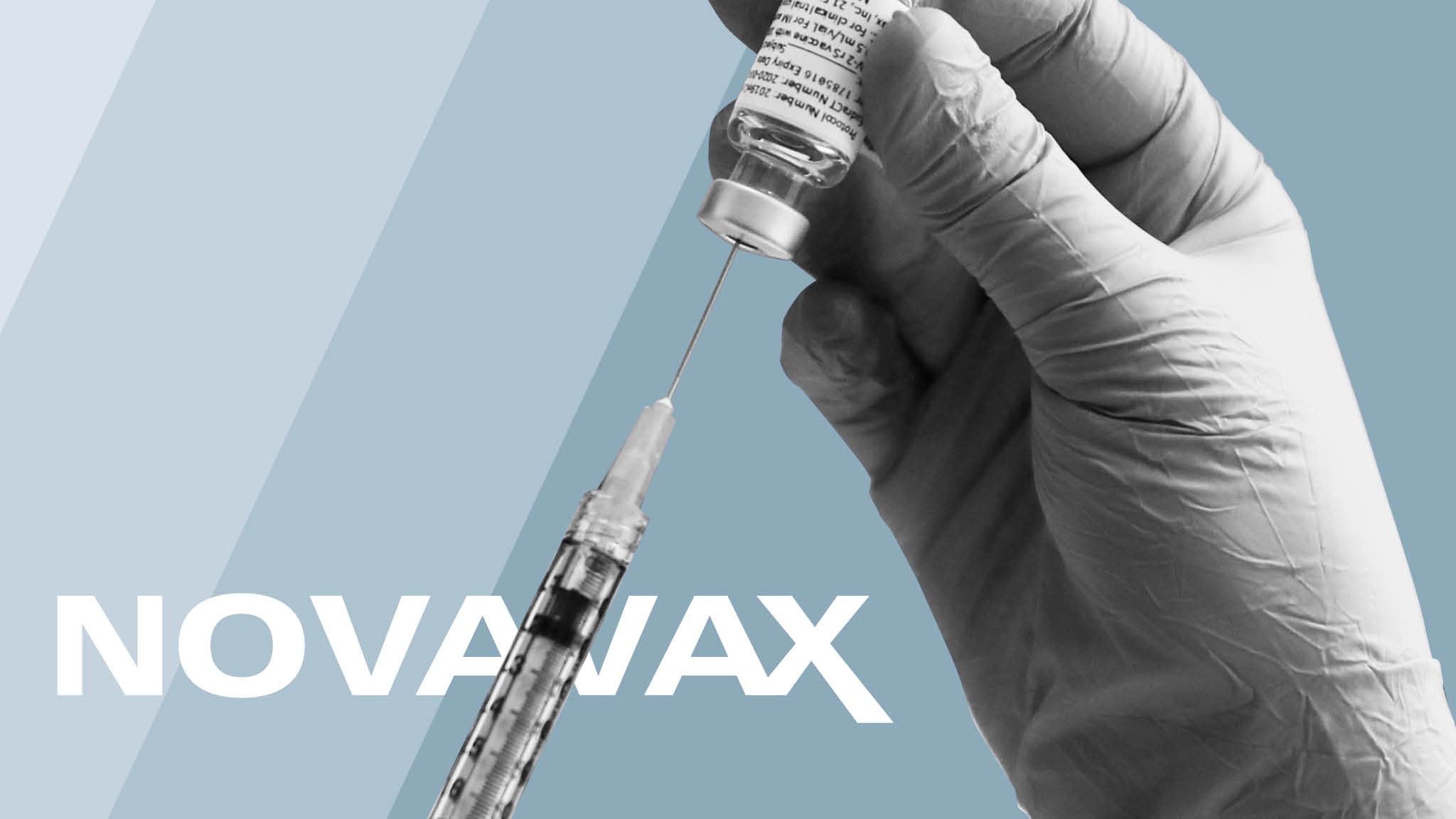
Pandemic Outbreaks and Vaccine Advancements
The 1957-1958 H2N2 pandemic and the 1968 H3N2 pandemic prompted further research and development of influenza vaccines. In response to these outbreaks, the U.S. Public Health Service recommended flu vaccines for high-risk individuals in the 1960s.
Pandemic Preparedness and Avian Flu Concerns
The 1997 outbreak of avian influenza (H5N1) led to the development of pandemic flu response plans in the U.S. and globally. This outbreak sparked increased efforts to prepare for potential future influenza pandemics.
Expanding Vaccine Recommendations and Advancements
In the 2000s, the Advisory Committee on Immunization Practices (ACIP) expanded its recommendations for annual influenza vaccination, first to include children and then to recommend vaccination for everyone aged 6 months and older.
The 2009 H1N1 Pandemic and Ongoing Vaccine Improvements
The 2009 H1N1 pandemic, caused by a new strain of the influenza virus, led to the development of a specific H1N1 vaccine. This event also highlighted the importance of pandemic preparedness and ongoing efforts to improve influenza vaccines.
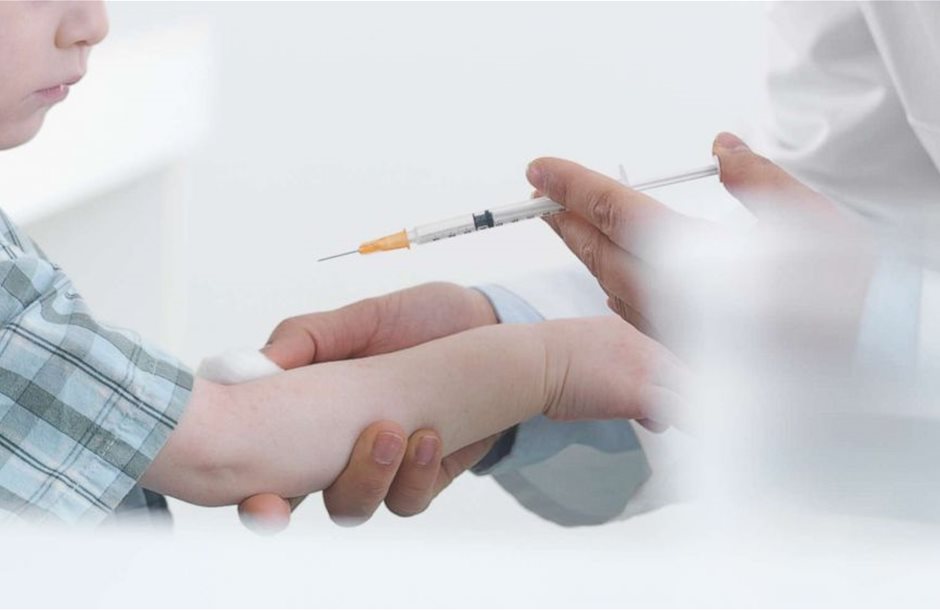
Pursuing the Holy Grail of Universal Flu Vaccines
Despite the progress made in influenza vaccine development, researchers continue to pursue the holy grail of a universal flu vaccine that could provide broad and long-lasting protection against multiple strains of the influenza virus.
How has the influenza vaccine evolved over time?
The influenza vaccine has evolved considerably since the early 20th century. Initially, flu vaccines were primarily available only to military personnel, but over time they became more widely accessible to the general public. The vaccine recommendations have also expanded to include more populations, such as children and those at high risk of complications. Researchers have also continued to develop new vaccine technologies and strains to address the constantly evolving influenza virus.
What was the impact of the 1918 influenza pandemic on vaccine development?
The 1918 influenza pandemic, which claimed the lives of millions worldwide, was a major catalyst for the development of influenza vaccines. The devastating impact of this outbreak sparked increased research and efforts to understand the influenza virus and create effective vaccines to prevent future pandemics.

How have influenza pandemics influenced the evolution of flu vaccines?
Influenza pandemics, such as the 1957-1958 H2N2 pandemic and the 1968 H3N2 pandemic, have played a significant role in shaping the evolution of influenza vaccines. These outbreaks have prompted the development of new vaccine technologies, expanded vaccine recommendations, and ongoing efforts to improve the effectiveness and preparedness for future influenza pandemics.
What is the current state of influenza vaccine research and development?
Researchers continue to work on developing a universal flu vaccine that could provide broad and long-lasting protection against multiple strains of the influenza virus. This “holy grail” of flu vaccines is a major focus of ongoing research, as it could revolutionize the way we approach the prevention and management of influenza outbreaks.
How has the COVID-19 pandemic impacted influenza vaccination efforts?
The COVID-19 pandemic has brought increased attention to the importance of vaccination and public health preparedness. While the COVID-19 vaccine development has been the primary focus, the pandemic has also highlighted the continued need for effective influenza vaccination programs to protect against seasonal flu outbreaks and potential future influenza pandemics.
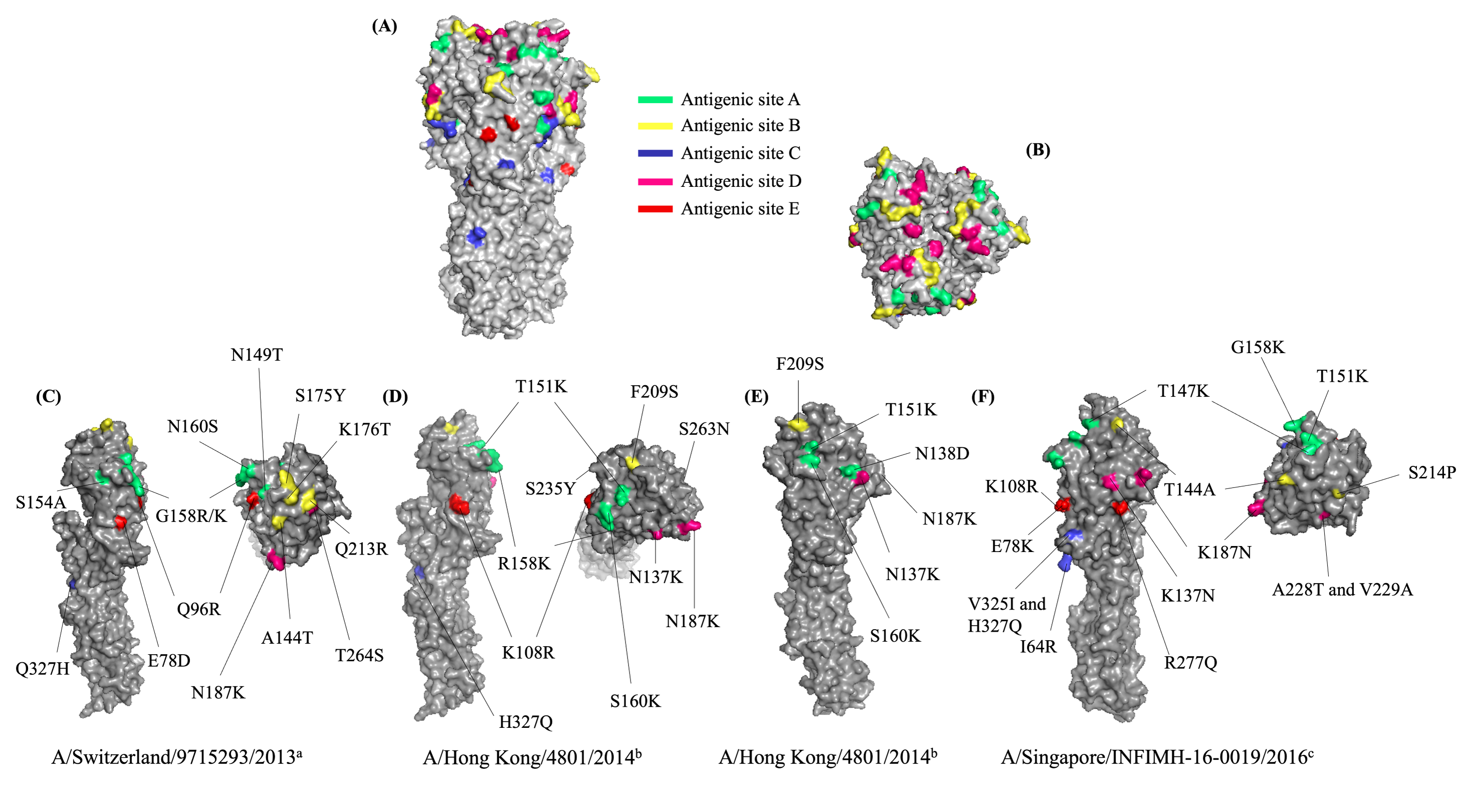
What role has Mayo Clinic played in the history of influenza vaccine development?
Mayo Clinic has been at the forefront of influenza vaccine research and development. During the 1918 pandemic, Mayo Clinic’s Dr. Edward C. Rosenow developed a mixed vaccine that aimed to protect against pneumonia, a common complication of the flu. More recently, Dr. Gregory Poland, head of Mayo Clinic’s Vaccine Research Group, has been a leading advocate for universal flu vaccine recommendations and research.
How have influenza vaccine recommendations evolved over time?
Influenza vaccine recommendations have expanded significantly over the decades. Initially, they were primarily targeted at military personnel, but in the 1960s, the U.S. Public Health Service recommended flu vaccines for high-risk individuals. In the 2000s, the Advisory Committee on Immunization Practices (ACIP) expanded the recommendations to include children and then to recommend vaccination for everyone aged 6 months and older.
History of flu (influenza): Outbreaks and vaccine timeline
Breadcrumb
Nurse assisting patient with the flu
A nurse assists a patient at the Walter Reed Hospital flu ward during the flu pandemic of 1918 and 2019.
1918
A flu (influenza) pandemic occurs. The flu pandemic is caused by a new h2N1 flu strain. In New York, people with the flu are required to be isolated at home. In Chicago, movie theaters and theaters close and public gatherings are not allowed. In San Francisco, people who work for the public must wear masks and others are encouraged to wear masks as well. The American Public Health Association suggests that people avoid public transportation. In southeastern Minnesota, near Mayo Clinic, many public spaces such as theaters, churches, meeting places and some schools are closed.
The flu pandemic lasts from 1918 to 1920. From spring of 1918 to spring of 1919, the flu causes more than 550,000 deaths in the U.S. and more than 20 million deaths worldwide.
In the fall of 1918 at Mayo Clinic, people with the flu and other contagious illnesses are cared for in the isolation hospital. Keeping patients with these illnesses isolated and keeping high standards of cleanliness likely prevented infections and saved lives. The isolation hospital of 40 beds is soon filled. The hospital is short of medical staff, and everyone on staff must help where needed. For example, nurses sometimes help in the kitchen and the laundry.
Mayo Clinic’s Dr. Edward C. Rosenow invents a flu serum that is made up of a mixed vaccine that includes bacteria that cause pneumonia. Dr. Rosenow gives the serum to Rochester residents for free. While Dr. Rosenow doesn’t state that the serum works in protecting against the flu, he notes that the serum doesn’t cause harm and might help provide some protection. Mayo Clinic receives many requests for the serum, which is sent to people across Minnesota and the Midwest. In the end, the serum doesn’t work as a vaccine to protect against the flu. But it might have helped protect people against pneumonia after having the flu.
But it might have helped protect people against pneumonia after having the flu.
Army men wearing masks
Army men stand in a line wearing masks at a U.S. Army hospital during the flu pandemic of 1918 and 1919.
1930s and 1940s
Researchers study flu viruses and develop flu vaccines. At first, mainly military members can get flu vaccines.
1945
The first flu vaccines are approved for use for people who aren’t in the U.S. military.
1957-1958
A new h3N2 flu strain causes another flu pandemic. About 116,000 people die in the U.S. and about 1.1. million die worldwide.
1960
In response to the flu pandemic that happened from 1957 to 1958, the U.S. Public Health Service recommends flu vaccines for people in the U.S. who are at high risk of flu complications.
1968
A new h4N2 flu strain causes another flu pandemic. This flu pandemic causes about 100,000 deaths in the U.S. and about 1 million deaths throughout the world. Researchers develop flu vaccines for the specific flu strains causing the pandemic.
Researchers develop flu vaccines for the specific flu strains causing the pandemic.
1970s
At Fort Dix, a flu outbreak caused by the h2N1 flu strain leads to the development of a flu vaccination program aimed at preventing flu pandemics.
1997
Bird flu (avian influenza) caused by the H5N1 flu strain infects people. This leads to the development of pandemic flu response plans in the U.S. and throughout the world.
2002
ACIP recommends that children ages 6 to 23 months old get an annual flu vaccine.
2007
The FDA approves a flu vaccine for avian influenza A caused by the H5N1 flu strain.
2008
ACIP recommends that people ages 6 months to 18 years old get an annual flu vaccine.
2009
A new h2N1 flu strain causes a flu pandemic. During 2009, the flu causes about 61 million illnesses, 274,0000 hospital stays and 12,400 deaths. Later in 2009, an h2N1 flu vaccine becomes available.
During the h2N1 flu pandemic, Mayo Clinic staff are trained in infection control and prevention.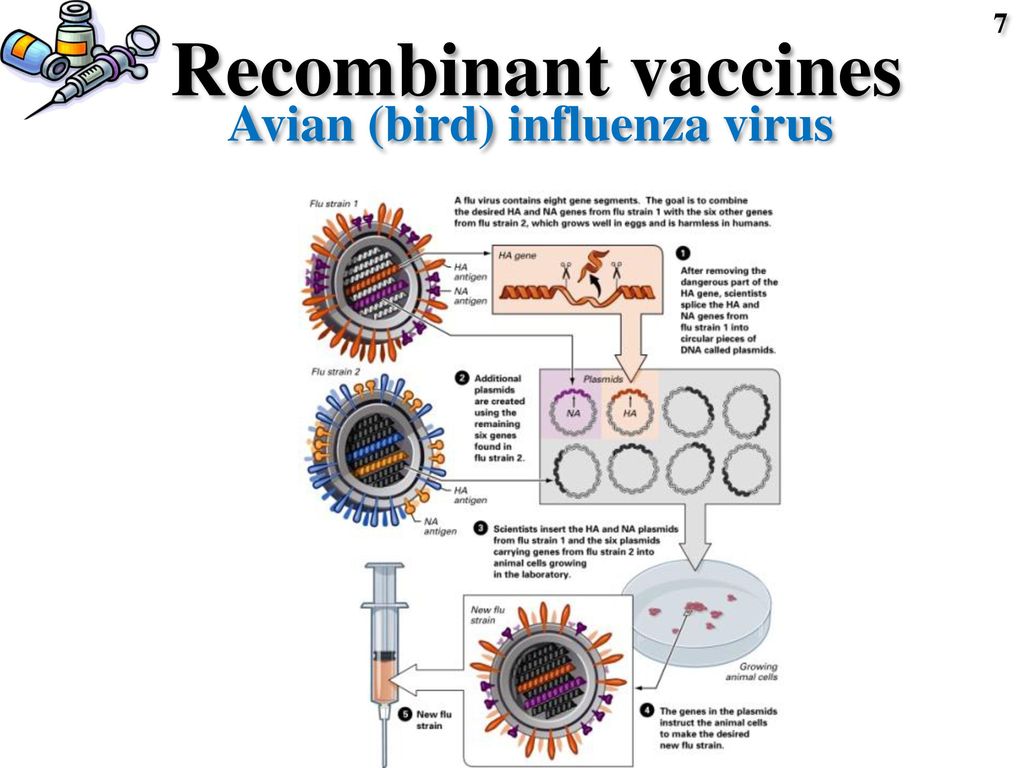 A disaster preparedness team meets regularly to discuss flu planning with clinical areas. Mayo Clinic gives recommendations about h2N1 precautions and provides education about how h2N1 spreads to employees and the community.
A disaster preparedness team meets regularly to discuss flu planning with clinical areas. Mayo Clinic gives recommendations about h2N1 precautions and provides education about how h2N1 spreads to employees and the community.
2010
ACIP recommends that everyone age 6 months and older get an annual flu vaccine. Gregory Poland, M.D., head of the Vaccine Research Group at Mayo Clinic, introduces and makes this recommendation. Dr. Poland will also recommend that health care providers be required to get vaccinated against the flu in 2016.
2019-2020
Flu vaccines prevent about 7.5 million illnesses, 3.7 million doctor visits, 105,000 hospital stays and 6,300 deaths.
- Flu shots and COVID-19
- Flu shot for kids: Does my child need a flu shot?
- Flu shot in pregnancy: Is it safe?
- Pursuing the holy grail of flu vaccines
Influenza | History of Vaccines
Symptoms and Causative Agent
Influenza is a respiratory illness caused by influenza viruses. There are three main types of influenza viruses (A, B, and C), but many strains of each type. Type A and B are of public health concern, while type C causes a mild form of the disease and has not been associated with outbreaks. The diseases caused by these viruses are often collectively referred to as “the flu.”
There are three main types of influenza viruses (A, B, and C), but many strains of each type. Type A and B are of public health concern, while type C causes a mild form of the disease and has not been associated with outbreaks. The diseases caused by these viruses are often collectively referred to as “the flu.”
Illness from influenza can range from mild to severe, depending on several factors, including the viral strain, the patient’s age, and the patient’s health. Certain groups are at higher risk for serious complications from the flu.
Symptoms of the flu tend to emerge suddenly, including fever, chills, coughing, sore throat, achiness, headaches, and fatigue. Vomiting and diarrhea may also occur, but these symptoms are more common for children than adults.
Transmission
Influenza is primarily transmitted via infected respiratory droplets – that is, by air, via coughing and sneezing. It’s important to note that some people who are infected will not experience any symptoms (this is known as an asymptomatic infection), but will still be contagious. They can infect others without ever knowing they’re infected themselves. Even patients who experience flu symptoms may be infectious as early as a day before they first feel ill, and for up to a week after.
They can infect others without ever knowing they’re infected themselves. Even patients who experience flu symptoms may be infectious as early as a day before they first feel ill, and for up to a week after.
An important note about influenza’s ability to spread is related to its frequent genetic changes. New strains of influenza viruses appear frequently, and previous infection with a different strain does not guarantee immunity against future infection. This is one reason why the antigens in the seasonal flu vaccine usually change each year—to try to protect against whichever flu strains are currently circulating. (For more information, see “Available Vaccines and Vaccination Campaigns” below.)
Treatment and Care
Generally, flu patients are encouraged to stay home and rest, both to recover and avoid infecting others. In mild cases, treatment is limited to addressing the symptoms of the disease: over-the-counter medicines such as acetaminophen or ibuprofen may be used to reduce fever and/or relieve aches and pains, and cough medicines or drops may be used for sore throats and to reduce coughing. Drinking extra fluids may be encouraged to prevent dehydration.
Drinking extra fluids may be encouraged to prevent dehydration.
For severe cases, or for individuals at high risk for complications, physicians may prescribe antiviral medication. Many circulating influenza strains have developed resistance to available antivirals, however. Vaccination remains the primary avenue for the prevention of the flu.
Complications
Pneumonia is the most commonly seen complication of influenza infection. Typically, it is caused by a secondary bacterial infection, such as Haemophilus influenzae or Streptococcus pneumoniae. The flu can also lead to sinus and ear infections, worsen existing medical conditions, such as chronic pulmonary diseases, or cause inflammation of the heart.
Although any flu patient can experience complications from the disease, certain groups are at higher risk for flu complications than others: older individuals, young children, people with asthma, and pregnant women are some of those whose risk for complications is elevated. In a typical flu season, people 65 or older account for 90% of deaths from the flu. (Some pandemic influenzas behave differently than expected in this regard. In the 2009 h2N1 pandemic, almost 90% of deaths from h2N1 influenza were among people younger than 65).
In a typical flu season, people 65 or older account for 90% of deaths from the flu. (Some pandemic influenzas behave differently than expected in this regard. In the 2009 h2N1 pandemic, almost 90% of deaths from h2N1 influenza were among people younger than 65).
Available Vaccines and Vaccination Campaigns
Because new strains of influenza appear frequently, the seasonal flu vaccine usually changes each year. Each season vaccine is generally designed to protect against three strains of influenza: two “A” strains, and one “B” strain. From start to finish—the selection of which three strains to target with the vaccine, to the production of the final product—the development process for the seasonal flu vaccine can take up to eight months.
Influenza surveillance centers around the world monitor the circulating influenza strains for trends year-round. Genetic data is collected and new mutations are identified. The World Health Organization is then responsible for selecting three strains most likely to genetically resemble strains circulating in the coming winter flu season. For the northern hemisphere winter, this decision is made in February prior. In some cases, one of the strains used in the previous year’s vaccine may be chosen again, if that strain continues to circulate. From this point, the development and production of the vaccine can begin.
For the northern hemisphere winter, this decision is made in February prior. In some cases, one of the strains used in the previous year’s vaccine may be chosen again, if that strain continues to circulate. From this point, the development and production of the vaccine can begin.
Four to five months after the three vaccine strains have been selected (in June or July), the three vaccine strains developed are separately tested for purity and potency. Only after individual testing is completed are the three strains combined into a single seasonal vaccine.
In the case of a pandemic, an additional vaccine may be created to protect against a particularly virulent or widespread strain of influenza. The need for a 2009 h2N1 influenza vaccine became apparent after the strains for the seasonal flu vaccine had already been selected, so that a separate vaccine was created.
A quadrivalent inactivated influenza vaccine was licensed in the United States in 2012, and a quadrivalent live virus nasal spray vaccine was licensed in 2013.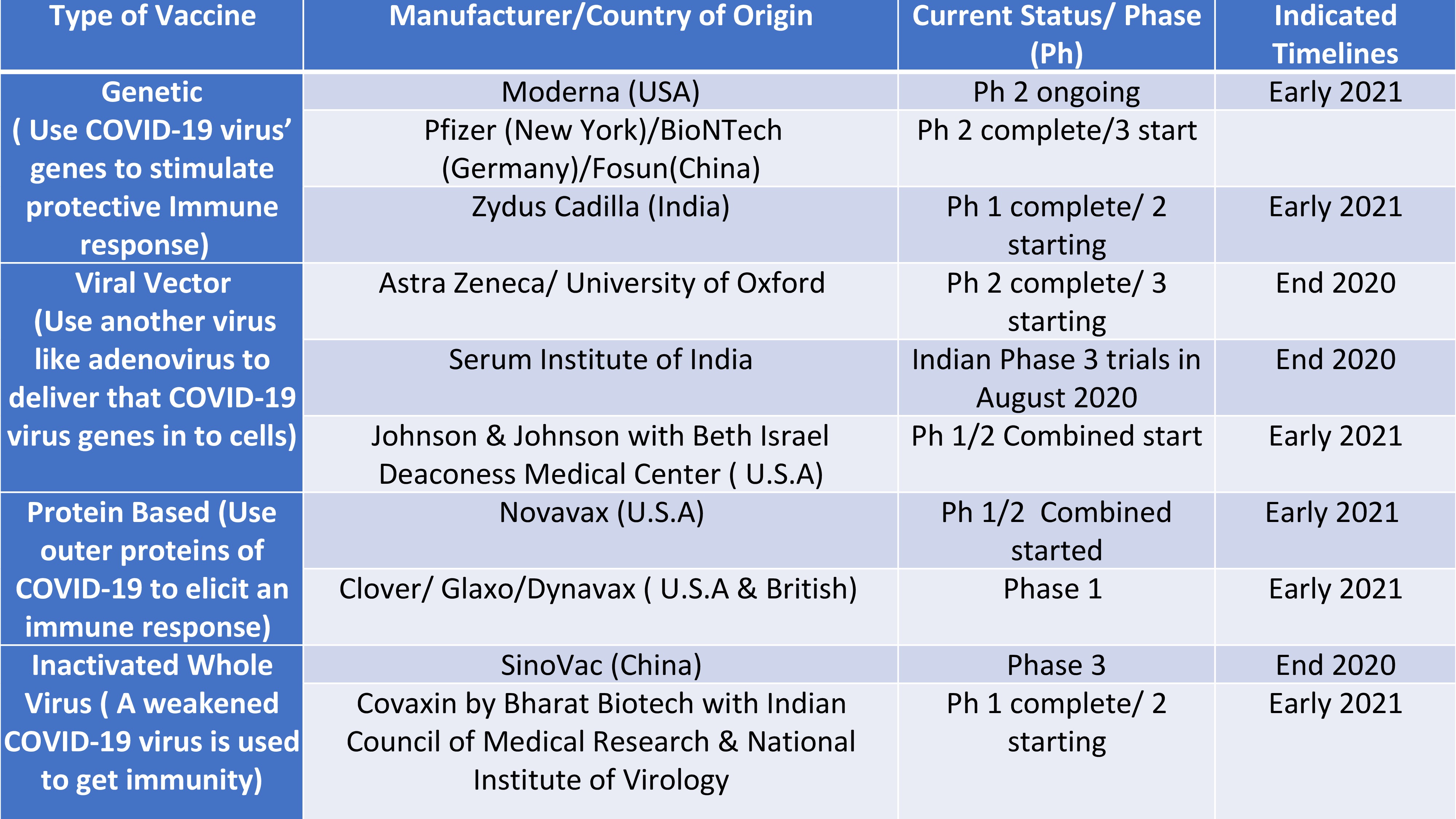 These formulations include two influenza B strains, and the A strains. These vaccines began to be available, along with trivalent vaccines, in the 2013-14 influenza season.
These formulations include two influenza B strains, and the A strains. These vaccines began to be available, along with trivalent vaccines, in the 2013-14 influenza season.
Sources
- Centers for Disease Control and Prevention. Epidemiology and Prevention of Vaccine-Preventable Diseases. . Atkinson, W., Wolfe, S., Hamborsky, J., McIntyre, L., eds. 13th ed. Washington DC: Public Health Foundation, 2015. (909 KB). Accessed 01/25/2018.
- CDC. . MMWR September 20, 2013.62;RR07:1-43. Accessed 01/25/2018.
- CDC. . Accessed 01/25/2018.
- Kamps, B.S., Hoffman, C., and Preiser, W. (eds.). . Paris: Flying Publisher, 2006. Accessed 01/25/2018.
Influenza Vaccine – DocDeti Children’s Clinics Network
Influenza is a highly contagious disease that can occur in children or adults of any age. Infection occurs more frequently during the winter months because people spend more time in close contact with each other. The flu is easily spread from person to person by coughing, sneezing, or touching surfaces.
There are several types of influenza viruses – A, B, C, D.
- Influenza C is indistinguishable in its symptoms from a mild cold and is not dangerous.
- No evidence yet found of newly discovered influenza D virus infecting anyone other than pigs and cattle
- Influenza B is represented by two lines – Victoria and Yamagata.
- Influenza A has many subtypes, but only 2 of them, h2N1 and h4N2, are dangerous for humans.
There have been several widespread outbreaks of influenza (called pandemics) that have killed many people around the world, such as the well-known “Spanish Flu” at 1918-1920, the causative agent of which was the influenza A-h2N1 virus. According to various estimates, from 50 to 100 million people (3-6% of the world’s population) died from it.
From 2009 to the present, a “modified version” of it has been circulating, officially called h2N1pdm09.
h2N1pdm09 is a subtype of influenza A, a combination of human and animal (pigs, birds) parts of the virus. People call it “swine flu”.
People call it “swine flu”.
These outbreaks occurred when new strains of influenza viruses developed (often from pigs or birds) and people became infected because they did not have immunity to these viruses.
Seasonal flu symptoms can vary from person to person, but typically include:
- Fever
- Headache and muscle pain
- Fatigue
- Cough and sore throat may also be present.
Influenza symptoms usually improve within two to five days, although the illness may last a week or more. Weakness and fatigue may persist for several weeks.
Unlike other seasonal “colds”, influenza can occur in extremely
severe, leading to complications and even death. A severe course is more likely in children, the elderly, pregnant women, and people with certain health problems such as asthma or other lung conditions.
Flu complications occur in some people; pneumonia is the most common complication. Pneumonia is a serious lung infection and is more common in young children, people over 65 years of age, people living in long-term care facilities (nursing homes), and people with certain conditions, such as diabetes or heart or lung problems. Pneumonia is also more common in people with weakened immune systems, such as those who have had a transplant.
Pneumonia is also more common in people with weakened immune systems, such as those who have had a transplant.
The most effective way to prevent the flu is to get the flu shot every year and use simple measures like hand washing. Antivirals can also help prevent infection if you’ve been exposed to the flu.
People who get the flu vaccine have a lower risk of getting sick or dying from it than people who have not been vaccinated.
1. In 1933, research by British scientists: Patrick Laidlaw, Wilson Smith and Christopher Andrews led to the discovery of the virus. They conducted experiments on laboratory ferrets (and later on mice) and proved that the culprit of the disease was not a bacterium, but a virus. Later it will be called the influenza A virus.
2. The first live attenuated (weakened) vaccine was developed by our compatriot Anatoly Aleksandrovich Smorodintsev in 1936. Under his leadership, the world’s first specialized scientific institution for the study of influenza, the Leningrad Research Institute of Influenza, appeared. For more than 50 years, this vaccine has been widely used in the USSR.
For more than 50 years, this vaccine has been widely used in the USSR.
3. In 1937, the Australian scientist Frank Burnet proposed a relatively simple method for culturing the virus in chicken embryos, which made it possible to obtain enough virions to create a killed vaccine
4. Discovery of influenza B virus. Then, in 1940, another influenza virus was isolated, which is also widespread in the human population, but differs significantly in antigenic properties from previously studied variants. New virus named influenza B virus
5. In the 1940s, the US military developed the first approved inactivated influenza vaccines, which were used during World War II. Chicken eggs continued to be used to make the virus used in influenza vaccines, but manufacturers improved the purity of the virus by developing improved processes to remove egg whites and reduce the systemic reactivity of the vaccine.
6. In 1947, antigenic drift was discovered – this is a gradual accumulation of mutations due to errors that occur during the synthesis of the viral genome. Due to gradual changes in surface antigens (in hemagglutinin and neuraminidase), virus strains arise that are so different from previous variants that our immune system recognizes them as completely new.
Due to gradual changes in surface antigens (in hemagglutinin and neuraminidase), virus strains arise that are so different from previous variants that our immune system recognizes them as completely new.
That is why the effectiveness of the influenza vaccine decreases with each subsequent season, and it is necessary to renew its composition and vaccinate everyone again. To solve this problem in 19In 52, the Global Influenza Surveillance and Response System (GISRS) was created within the WHO structure. Its work is to collect information about viruses from all over the world. The data obtained is entered into a single database, and a special commission decides on the prediction of which strains of influenza will actively circulate and may cause an epidemic in the coming season.A lot of factors are taken into account, including the aggressiveness of newly identified viruses, and similarity with previously circulating strains, and the presence of immunity in the population.
Every year in February there is a meeting of the WHO, at which, according to GISRS, recommendations are issued to manufacturers about strains of the influenza virus that should be included in the vaccine. At the end of February-beginning of March, the cultivation of strains begins. Almost all vaccine manufacturers use old, proven technology to do this: the influenza virus replicates in chick embryos. If the recommended strain is well cultivated, it is taken into production. Sometimes, due to poor growth of a particular type of virus, a well-growing analogue with a similar antigenic structure is urgently selected.
At the end of February-beginning of March, the cultivation of strains begins. Almost all vaccine manufacturers use old, proven technology to do this: the influenza virus replicates in chick embryos. If the recommended strain is well cultivated, it is taken into production. Sometimes, due to poor growth of a particular type of virus, a well-growing analogue with a similar antigenic structure is urgently selected.
After that, the vaccine manufacturing process is turned on at full capacity. As a rule, about 4 months are spent on the production of three (or four) strains, neutralization (in different ways for different types of vaccines), purification, quality control, mixing of components and packaging.
7. In 1973, WHO begins to make predictions and issue recommendations on the composition of influenza vaccines based on data from epidemiological laboratories around the world
8. In 1978, the production of a trivalent vaccine begins (two strains of influenza A virus and one strain of influenza B virus circulate simultaneously).
9. 2013 WHO began to make recommendations for the composition of the quadrivalent vaccine, including the second strain of influenza virus B
Modern vaccines:
Currently, there are trivalent vaccines, which include antigens of two types of influenza A and one of influenza B, and quadrivalent – including all 4 antigens for more complete protection.
By type, influenza vaccines are divided into live attenuated, inactivated, represented by a killed virus (whole-virion vaccines) or its parts (split vaccines, they are also split, as well as subunit) and recombinant. The first influenza vaccine developed was live, but most influenza vaccines are now inactivated. Each year the list of available vaccines may be different, you can check with your doctor.
1. Live attenuated vaccine – Ultravac, in the form of a nasal spray, intended for people aged 2-49 years, rare in the Russian Federation
2. Non-live vaccines:
- split – contains viral particles in disassembled form, includes surface and internal antigens: Ultrix quadri, Ultrix, Flu-m, Vaxigripp, Flu-m tetra
- inactivated subunit without adjuvant (immune response enhancer) – contains disassembled viral particles and surface antigens: Influvac.
 With adjuvant-Grippol plus, Grippol quadrivalent, Sovigripp
With adjuvant-Grippol plus, Grippol quadrivalent, Sovigripp - inactivated whole virions – contains viral particles or whole virions: Microfluidic not used
3. Recombinant – do not produce viral particles, but only
viral antigens in a specially “trained” (genetically modified)
cell culture of non-chicken origin. Therefore, such
vaccines do not even contain traces of egg protein. But they do not apply on the territory of the Russian Federation.
The vaccination schedule is determined by the instructions for each individual drug, for example:
- 1) Ultrix quadri, Ultrix – children 6 months-35 months – 2 times (0.25 ml) / m with a minimum interval of 4 weeks, children over 3 years old, adolescents and adults without age limit – 1 dose (0.5 ml)
- 2) Flu-M – children over 6 years old, adolescents and adults without age limit – 1 dose (0.5 ml)
- 3) Vaxigripp – children aged 6 months to 35 months – 0.25 ml; children aged 3 to 8 years – 0.
 5 ml; adults and children from 9years and older – 0.5 ml. Children younger than 9 years of age receiving their first influenza vaccination should receive two doses of the vaccine at least 1 month apart.
5 ml; adults and children from 9years and older – 0.5 ml. Children younger than 9 years of age receiving their first influenza vaccination should receive two doses of the vaccine at least 1 month apart.
Also, given that the claimed composition of the Ultrix Quadri preparation complies with WHO recommendations, we can rely on the vaccination schedule recommended by WHO and other international organizations (AAP, WHO, ACIP) along with the instructions for the drug:
- children 6 months-3 years old: if the vaccine is given for the first time and the child has never had the flu before, twice at a dose of 0.25 ml with an interval of 4 weeks, if in the past seasons the child has already received a total of 2 or more flu shots or had been ill with them; once (0.25 ml)
- children 3-8 years old: if the vaccine is given for the first time and the child has never had the flu before – twice at a dose of 0.5 ml with an interval of 4 weeks, if in the past seasons the child has already received a total of 2 or more flu shots or had been ill with them – once (0.
 5 ml)
5 ml) - children from 9 years of age, adolescents and adults: regardless of the history of previous vaccinations and diseases – once (0.5 ml)
Conclusion: The optimal vaccination scheme is selected individually at the doctor’s appointment. Choose the vaccine that is available to you. Any vaccine is better than none.
The flu shot only protects against seasonal flu and does not affect the incidence of other infections during the autumn-winter period.
Vaccination against influenza
You can get vaccinated at the vaccination room, which works daily according to the schedule of the office in our polyclinic No. 38 (vaccination room No. 318).
Opening hours of vaccination room No. 318:
- Monday, Wednesday, Friday from 9:00 to 14:00
- Tuesday, Thursday from 14:00 to 19:00
Influenza has been known since time immemorial, and the first, very accurate description of the clinical picture of the disease was given in 412 AD. e. Hippocrates. The disease has long been called “Italian fever” . A more harmonious nickname, “influenza”, she received in the middle of the XVIII century in Italy. The word means “influence”. The modern name, which comes from the German verb “grab”, appeared in the early 30s of the last century, when an American scientist, Richard Shope, discovered the main cause of influenza and the causative agent of infection.
e. Hippocrates. The disease has long been called “Italian fever” . A more harmonious nickname, “influenza”, she received in the middle of the XVIII century in Italy. The word means “influence”. The modern name, which comes from the German verb “grab”, appeared in the early 30s of the last century, when an American scientist, Richard Shope, discovered the main cause of influenza and the causative agent of infection.
In the past century, the world was shaken by a severe pandemic of the h2N1 virus that began in 1918. Although China was the birthplace of this type of influenza, the disease spread across Europe from the port cities of Spain, Italy and France. raged across the American continents. But since the media first started sounding the alarm in Spain, the pandemic has been referred to as the “Spanish flu”. A third of the world’s population has been ill. The victims, according to various estimates, ranged from 50 to 100 million. A severe pandemic of 1957-1958 came from Asia, which claimed about 4 million lives. Although the Hong Kong flu, which raged in 1968-1969, called a moderate pandemic, the losses for mankind amounted to about one million people through his fault.
Although the Hong Kong flu, which raged in 1968-1969, called a moderate pandemic, the losses for mankind amounted to about one million people through his fault.
Influenza is a severe viral infection that affects men, women and children of all ages and nationalities. Influenza accompanies high mortality, especially in young children and the elderly. Influenza epidemics occur every year, usually during the cold season, and affect up to 15% of the world’s population. Influenza is an acute highly contagious disease, which is characterized by severe toxicosis, moderate catarrhal phenomena with the most intense damage to the trachea and large bronchi. The influenza virus is very easily transmitted. The most common route of transmission of infection is airborne. It is also possible (although more rare) and the household route of transmission – for example, infection through household items. When coughing, sneezing, talking, particles of saliva, mucus, sputum with pathogenic microflora, including influenza viruses, are ejected from the nasopharynx of a patient or a virus carrier. For a short period of time, an infected zone is formed around the patient with a maximum concentration of aerosol particles. The range of their dispersion usually does not exceed 2-3 m. Influenza is characterized by a short incubation period – from several hours to 1 – 4 days. Then the period of acute clinical manifestations begins. The severity of the disease depends on many factors: general health, age, whether the patient has been in contact with this type of virus.
For a short period of time, an infected zone is formed around the patient with a maximum concentration of aerosol particles. The range of their dispersion usually does not exceed 2-3 m. Influenza is characterized by a short incubation period – from several hours to 1 – 4 days. Then the period of acute clinical manifestations begins. The severity of the disease depends on many factors: general health, age, whether the patient has been in contact with this type of virus.
According to medical statistics, influenza and acute respiratory viral infections (ARVI) now account for about 95% of all infectious diseases in Russia – disease-spreading infections not only harm the health of Russians, but also lead to economic problems in many enterprises, especially in epidemic period. As one of the most pressing health problems, influenza and SARS are not only amenable to successful treatment, but can also be effectively prevented. The first flu vaccine was developed by US military medicine in 1940 and was tested on 12 thousand soldiers during World War II.

 With adjuvant-Grippol plus, Grippol quadrivalent, Sovigripp
With adjuvant-Grippol plus, Grippol quadrivalent, Sovigripp 5 ml; adults and children from 9years and older – 0.5 ml. Children younger than 9 years of age receiving their first influenza vaccination should receive two doses of the vaccine at least 1 month apart.
5 ml; adults and children from 9years and older – 0.5 ml. Children younger than 9 years of age receiving their first influenza vaccination should receive two doses of the vaccine at least 1 month apart. 5 ml)
5 ml)